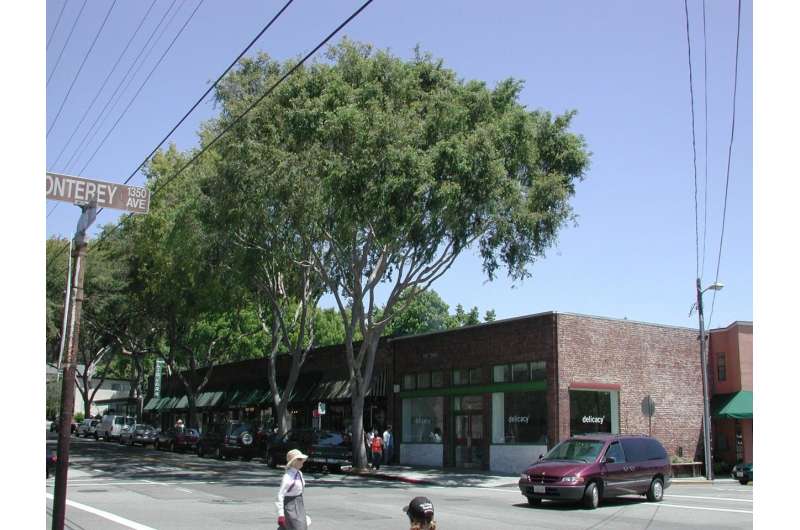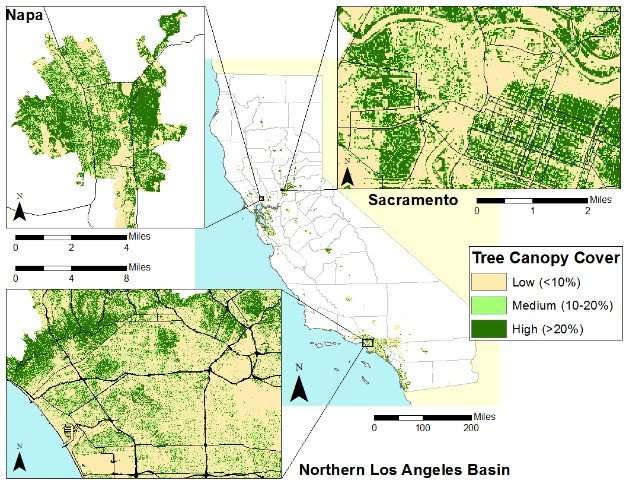Despite city tree benefits, California urban canopy cover per capita lowest in US

Trees in California communities are working overtime. From removing carbon dioxide and pollutants from the air, intercepting rainfall and increasing property values, California's 173.2 million city trees provide ecosystem services valued at $8.3 billion a year. However, according to a recent study, more benefits could be realized if the Golden State's urban forests didn't have the lowest canopy cover per capita in the nation.
"The structure, function and value of urban forests in California communities," recently published online in Urban Forestry and Urban Greening, reports that California's 109 square yards of city tree canopy per person lags behind other urban canopy-poor states, such as Nevada (110), Wyoming (146) and Montana (148). And there's no comparison with well-treed states, such as New Hampshire (1,514), Connecticut (1,214) or Alabama (1,182).
"There's no question that Californians are deriving significant benefits from their urban forests," said Greg McPherson, lead author of the study and a research forester with the U.S. Forest Service's Pacific Southwest Research Station. "However, the fact remains that more can be done and will need to be done in light of the recent tree mortality epidemics plaguing some of our urban forests."
In southern California, for example, the invasive shot hole borer has killed thousands of city trees and poses a threat to 33 percent of the urban tree population in the region. More than 50 tree species there are reproductive hosts for the insect, making them vulnerable to the lethal fungus it transmits.

City tree population and species composition figures were generated through an analysis of 1,385 study plots located across the state. Costs and benefits of ecosystem services were derived through numerical models that factored in the tree's species, size and location across six climate zones within the state. Canopy cover estimates and state comparisons were calculated by analyzing aerial imagery from the 2012 National Agricultural Imagery Program.
"One of the factors driving the low per capita rating for California city trees could be the fact that 20 of the nation's 100 most densely populated cities are in California, meaning there's a higher volume of people in a confined space for trees," said Natalie van Doorn, study co-author and research urban ecologist with the Pacific Southwest Research Station. "California's arid summer climate also can suppress tree establishment and growth, which also could be a contributing factor for the results we observed."
Still, with about 236 million vacant tree sites within cities, van Doorn noted that Californians have ample room for new tree plantings.
"In fact, our study results are already being used by municipal and state agencies to identify priority areas for planting and tree conservation, as well as examining potential disparities in disadvantaged communities," she said.
More information: E. Gregory McPherson et al, The structure, function and value of urban forests in California communities, Urban Forestry & Urban Greening (2017). DOI: 10.1016/j.ufug.2017.09.013
Provided by USDA Forest Service


















